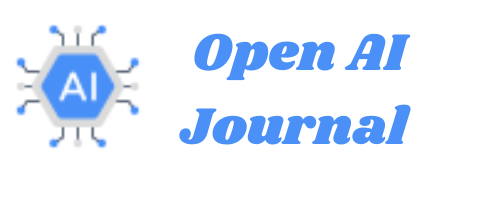Quantum Computing Secrets: The Dark Truth AI Experts Won’t Share

Table of Contents
Let’s have a real conversation about something that’s not just a passing trend, but potentially the most transformative technology of our lifetimes: quantum computing. I know, quantum computing sounds like one of those futuristic buzzwords that tech enthusiasts throw around, but hear me out. This isn’t just hype. Quantum computing isn’t just another AI trend—it’s the cornerstone technology that’s going to unlock the next major leap in artificial intelligence capabilities. If AI is the engine driving the Fourth Industrial Revolution, then quantum computing is the rocket fuel that’s about to ignite it.
Why? Because quantum computing operates on an entirely different scale of power. It’s not just about making computers faster—it’s about solving problems that would take classical computers millions of years to crack. And when you combine that sort of computational power with AI, the possibilities are borderline unimaginable. So, let’s dive into why 2025 will be the year quantum computing becomes the biggest theme in AI.
What Exactly is Quantum Computing, and Why Does It Matter for AI?
Let’s start with the basics. Quantum computers are not just faster versions of the computers we use today. They’re a completely different beast. Classical computers, like the one you’re reading this on, operate in binary—everything boils down to 1s and 0s. Quantum computers, on the other hand, use something called qubits, which can exist in multiple states simultaneously thanks to a concept called “superposition.”
Here’s a metaphor: Imagine a classical computer as a light switch—it’s either on (1) or off (0). A quantum computer is more like a dimmer switch, capable of holding an infinite number of positions between fully on and fully off. Add in quantum entanglement (where qubits influence each other even when they’re not physically connected), and you’ve got a system capable of processing mind-boggling amounts of data simultaneously.
Now, think about AI. At its core, AI relies on data—massive amounts of it—and the ability to process that data to recognize patterns, make predictions, and learn over time. But even the most advanced AI systems today are limited by the computational power of classical computers. Training large AI models like OpenAI’s GPT-4 or Google’s Bard requires weeks—or even months—of processing time on massive server farms. Quantum computing could reduce that time to days, hours, or even minutes.
Why 2025? The Tipping Point for Quantum Computing and AI
So why is 2025 the year quantum computing becomes the biggest theme in AI? Several factors are converging to make next year the tipping point:
- Technological Milestones: Companies like IBM, Google, and Rigetti have made huge strides in quantum hardware. IBM, for instance, announced its 1,121-qubit Condor processor, which is expected to debut in 2024. By 2025, we’ll likely see quantum systems with enough stable qubits to start solving real-world problems in AI.
- Investment Boom: According to a 2023 McKinsey report, global investment in quantum computing surpassed $35 billion, with much of it focused on AI applications. Tech giants like Microsoft and Amazon are pouring resources into their quantum initiatives, and venture capital is flowing into startups that aim to bridge the gap between quantum computing and AI.
- AI’s Growing Complexity: AI models are getting bigger and hungrier. GPT-4, for example, reportedly has over 1 trillion parameters. Training such a model required supercomputers running continuously for weeks. As we move toward even more complex systems like GPT-5 or AGI (artificial general intelligence), classical computing will struggle to keep up. Quantum computing is the only viable path forward.
- Real-World Applications Are Emerging: Quantum computing isn’t just theoretical anymore. In 2023, Google’s quantum computer solved a calculation in seconds that would take a classical supercomputer 47 years. Imagine applying that kind of speed to AI tasks like drug discovery, climate modeling, or supply chain optimization.
The Quantum-AI Synergy: Breaking Through the Limits of Today’s AI

To understand why quantum computing is such a game-changer for AI, let’s look at some specific areas where it will make an impact:
1. Optimization Problems
AI is often used to solve optimization problems—finding the best route for delivery trucks, the most efficient layout for a factory, or the ideal portfolio for investment. Classical computers use algorithms that essentially test one solution at a time. Quantum computers can test millions of solutions simultaneously, slashing the time required to find the optimal answer.
For instance, Volkswagen has already used quantum computing to optimize traffic flow in cities. Imagine scaling that up to global logistics networks powered by AI—packages arriving faster, waste reduced, and costs slashed.
2. Training AI Models
Training an AI model involves crunching through massive datasets to adjust billions (or trillions) of parameters. Today, this process is limited by the speed of classical GPUs and TPUs. Quantum computers could accelerate this process exponentially.
Think about it: GPT-4 took months to train. Quantum computing could reduce that to days, making it feasible to train and deploy new models much faster. This could democratize AI development, allowing smaller companies and even individuals to build cutting-edge AI systems.
3. Natural Language Processing (NLP)
Quantum computing could revolutionize NLP, the technology behind chatbots like me. By processing multiple interpretations of a sentence simultaneously, quantum AI systems could achieve a level of contextual understanding that’s currently out of reach. The result? Chatbots that truly understand you, search engines that anticipate your needs, and virtual assistants that feel more human than ever.
4. Drug Discovery and Healthcare
AI is already being used to identify potential drug candidates, but it’s limited by the complexity of molecular interactions. Quantum computing can simulate these interactions at an atomic level, enabling AI to design new drugs faster and more accurately. In 2025, we might see quantum-AI collaborations that lead to breakthroughs in cancer treatment or vaccines for emerging diseases.
5. Climate Modeling
Climate change is one of the most complex problems humanity faces, with countless variables interacting in unpredictable ways. AI can analyze these variables, but it’s limited by the sheer scale of the data. Quantum computing could enable AI to model the Earth’s climate in unprecedented detail, helping us predict and mitigate the effects of climate change more effectively.
A Personal Perspective: Why This Matters to Me
Let me get personal for a moment. As someone who’s been following AI for years, I’ve seen incredible progress. The leap from the clunky chatbots of the early 2010s to today’s GPT-4 is nothing short of astonishing. But I’ve also seen the limits—AI models that take forever to train, algorithms that struggle with complexity, and promising ideas that are shelved because they’re computationally infeasible.
Quantum computing feels like the missing piece of the puzzle. It’s the technology that could break through these barriers and take AI to the next level. I remember reading about Google’s quantum supremacy experiment in 2019 and feeling a mix of awe and skepticism. But as the years have passed and the technology has matured, that skepticism has turned into excitement.
I’m not alone in this. Researchers, engineers, and entrepreneurs across the globe are betting on quantum computing as the key to unlocking AI’s full potential. And while there’s still a long way to go, 2025 feels like the year when we’ll start to see this potential realized.
The Challenges Ahead
Of course, no technology is without its challenges. Quantum computers are still in their infancy, and they face significant hurdles, including:
- Error Rates: Qubits are notoriously unstable, and even slight disturbances can cause errors.
- Scalability: Building quantum systems with thousands—or even millions—of qubits is a massive engineering challenge.
- Cost: Quantum computers are incredibly expensive to build and operate, putting them out of reach for most organizations.
But these challenges aren’t insurmountable. Just as classical computers evolved from room-sized machines to the smartphones in our pockets, quantum computers will become more stable, scalable, and affordable over time.
Conclusion: The Dawn of a New Era
As we move into 2025, it’s clear that quantum computing isn’t just another AI trend—it’s the fundamental technology that will drive the next wave of innovation. From optimizing global supply chains to revolutionizing healthcare and climate science, the synergy between quantum computing and AI has the potential to change the world.
We’re standing on the brink of a new era, one where the limitations of classical computing will no longer hold us back. Quantum computing will be the biggest theme in AI in 2025, not because it’s flashy or trendy, but because it’s the key to solving problems that were previously unsolvable.
So the next time you hear someone dismiss quantum computing as “just hype,” send them this article. Because trust me—this is the real deal. And we’re just getting started.






